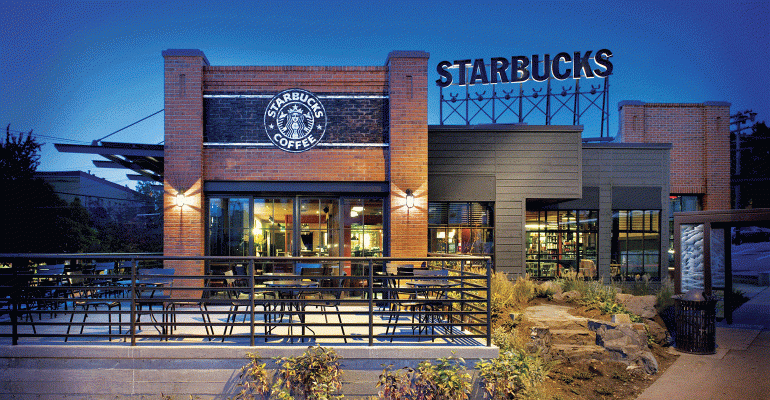Starbucks posted strong growth for the second quarter, ended March 31, reporting a 3% increase in global same-store stores and a 4% increase in United States same-store sales, the company said Thursday. The global gains were driven by a 3% increase in average ticket.
But an otherwise solid earnings report was hampered by another quarter of declining traffic in China, one of Starbucks’ key markets. Comparable transactions were down by 1% year-over-year in the Asian country, where Luckin Coffee – Starbucks’ top competition there — has seen expansive growth and just filed for a U.S. IPO earlier this week.
Starbucks does not seem worried about the competition, however. As CEO Kevin Johnson said Thursday, Starbucks in China saw a 3% increase in same-store sales for the quarter, and although traffic was down year-over-year, it was up compared with the previous three quarters.
“Starbucks has been in China for 20 years now,” Johnson said during Thursday’s earnings call. “And throughout that 20-year period, we understand what differentiates Starbucks globally as well as in China, and we're going to stay true to those principles. We're playing the long game and we're very confident in the strategy.”
To stay competitive with upstarts like Luckin Coffee, Johnson said they will be announcing mobile pay in China and an expansion of Starbucks Delivers to 3,000 stores across 50 cities in China by the end of 2019.
Traffic remains a struggle stateside as well. U.S. traffic was stagnant during 2Q, with transactions remaining flat for the second quarter in a row, though afternoon traffic continues to improve. Johnson said that afternoons saw their highest performance in three years, attributable to cold beverage innovation and improvements in customer experience.
Starbucks continues to focus on loyalty in the U.S. market, and reported a 13% increase in loyalty program membership to 16.8 million during the first quarter of 2019. Earlier this quarter, Starbucks rolled out a revamp of its 11-year-old loyalty program, which allows for more customization and faster rewards. The rollout initially received mixed reviews from customers who were not happy with an apparent devaluation of points, but Starbucks remains confident in their long-term loyalty strategy:
“From a rewards standpoint, our rewards membership, we basically up-leveled our current program from a frequency-based program to a spend-based program in December,” John Culver, group president, International, Channel Development and Global Coffee & Tea, said during Thursday’s earnings call. “Our 90-day active membership in the quarter, since that change, has increased over 25% on a year-over-year basis.”
“The vision for the program is to really provide more access to potential members,” COO Rosalind Brewer added. “The first part of that is allowing our new members to have rewards earlier. … Now members are able to redeem their stars at five tier levels, ranging from 25 to 400 stars, and also to expand the number of items that they can redeem, like merchandise or at-home coffee. So, it’s a much broader expanded program for us.”
Revenue for the second quarter, ended March 31, increased 5% to $6.3 billion, up from $6.03 billion a year earlier. Net income increased 0.5% to $663.2 million or 53 cents per share, up from $660.1 million, or 47 cents per share a year earlier.
Starbucks is also continuing to grow its Starbucks Delivers platform in the U.S. — which officially launched in January — and has already expanded to 1,600 stores across seven markets during the second quarter.
“Our primary focus is to drive customer awareness that leads to trial and adoption of this new channel,” Johnson said during the call. “This approach is enabling us to refine the program as it grows and ensure a quality customer experience.”
Starbucks opened a net 319 units in the second quarter and as of March 31, had 30,184 stores globally.
Contact Joanna Fantozzi at [email protected]
Follow her on Twitter: @joannafantozzi





